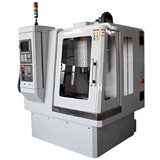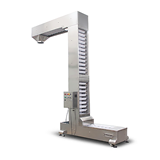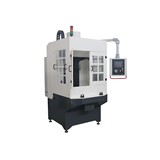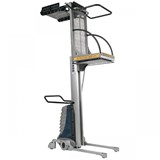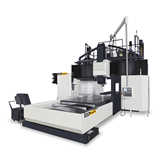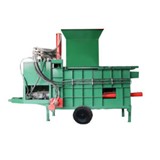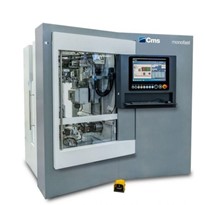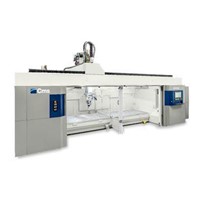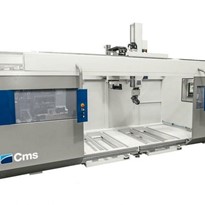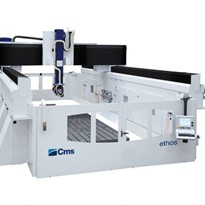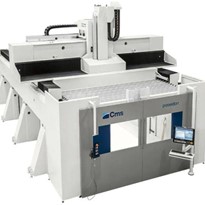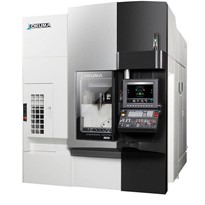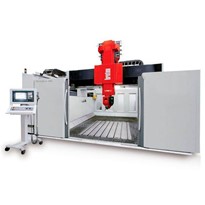This article will discuss the vertical 5-axis vs horizontal 5-axis debate to elucidate some of their key differences.
What is a vertical 5-axis machine?
A vertical machining centre or VMC is the most common 5-axis CNC configuration. The spindle moves up and down the z-axis and contacts the part from above. A 5-axis VMC typically rotates around the a and b axes on a trunnion with a rotating table.
Benefits of a vertical machining centre (VMC)
There is a reason this type of machine is the most popular on the market. VMCs offer a wide range of benefits as listed below.
- Shorter tools – VMCs generally have smaller-profile spindles than horizontal centres. This means that the spindle can get closer to the part without the risk of crashing into it. This allows for much shorter and more rigid tool setups. Shorter tools result in improved surface finishes and longer tool life.
- Visibility – A VMC allows for excellent visibility during machining. Operators can keep an eye on the tool and the part in case anything goes wrong. This is in contrast to HMCs which have poor visibility.
- Operator familiarity – VMCs are the most commonly used 5-axis machines and can be found in almost every machine shop. Since the fundamentals are all the same, it doesn’t take long to train operators on new machines.
- Affordability – The price comparison of vertical 5-axis vs horizontal 5-axis units favours the former; VMC 5-axis machines are far cheaper than HMCs. This provides a lower barrier to entry and ultimately results in shorter payback periods.
- Smaller footprint – VMCs have a small footprint compared to HMCs and can easily be fit into an existing workshop.
- High accuracy – VMCs are well-suited to parts that require precision features. It’s not unusual, for instance, to use one to create tool dies for injection-moulding applications.
Disadvantages of a vertical machining centre
Listed below are some of the main disadvantages of using a 5-axis VMC.
- Longer setup time – VMCs generally take longer to set up as work cannot take place while other parts are being cut. This can be overcome with increased levels of automation, but that means added costs.
- Chip flow – Due to the geometry of a VMC, chips of removed material tend to collect on the part or in deep holes. This introduces the risk of recutting chips which in turn results in reduced tool life and poor surface finishes.
What is a horizontal 5-axis machine?
In a horizontal machining centre or HMC, the spindle is oriented parallel to the ground, moving back and forth on the y-axis and traversing up and down on the z-axis. There are many HMC configurations, some of which have 2- or 3-axis mill heads. Horizontal machines are typically used for heavy machining that requires high material removal rates.
Benefits of a horizontal machining centre (HMC)
Listed below are some of the main advantages of 5-axis HMCs.
- Chip and coolant flow – Due to the workpiece being oriented such that the cutting head comes in horizontally, gravity automatically removes most chips and coolant from the part, allowing everything to fall to the bottom of the machine where it can be removed with a chip conveyor.
- Production – Most HMCs allow for new jobs to be set up while another part is being cut. This is possible due to the rotating machine table. Once a part is done it rotates out and the uncut part takes its place. The machine can immediately start on the new part while the completed one is removed.
- Flexibility – Operational flexibility can be a major factor when choosing between vertical 5-axis vs horizontal 5-axis centres, and HMCs come out on top in this regard. This is because they give you the unique ability to change out entire milling heads. These heads can be exchanged as and when required to allow for multiple operations in one setup on one machine, true to the one-and-done maxim.
- Lower labour cost – While the machine itself is more expensive, it allows for improved productivity and lower labour costs. The simple fact that a machine can be loaded while it is cutting results in less idle spindle time and more flexibility for your employees to work on other tasks.
Disadvantages of a horizontal machining centre
Listed below are some of the main disadvantages of using a 5-axis HMC.
- Floor Space – HMCs take up a significant amount of floor space when compared to VMCs. It must, however, be noted that this increase in floor space is directly proportional to an increased bed volume and productivity potential.
- Cost – HMCs are generally far more expensive than VMCs due to their size and high rigidity requirements.
In conclusion: vertical 5-axis vs horizontal 5-axis
Each of the 5-axis machine styles is suited to a specific type of work. HMCs are excellent at high-volume production and oversized heavy parts whereas VMCs work well with relatively small parts that require high precision. Both styles have a wide array of automation options available as either built-in or custom standalone solutions. This makes both machines capable of reaching optimal productivity and maximum spindle time.
If you are having trouble choosing between vertical 5-axis vs horizontal 5-axis machines, contact TJ Machine Tools today to learn more about which would be better suited to your unique application.



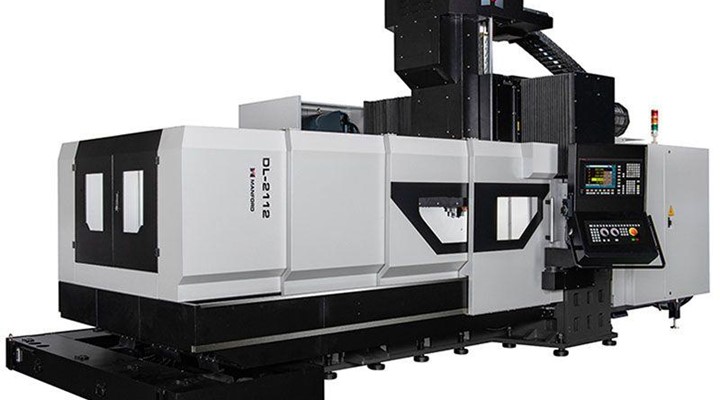
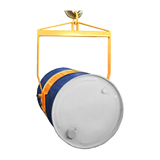




-160x160-state_article-rel-cat.png)

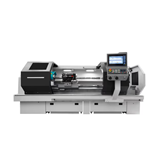
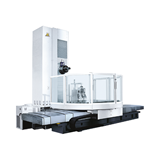
-160x160-state_article-rel-cat.png)




-160x160-state_article-rel-cat.png)

